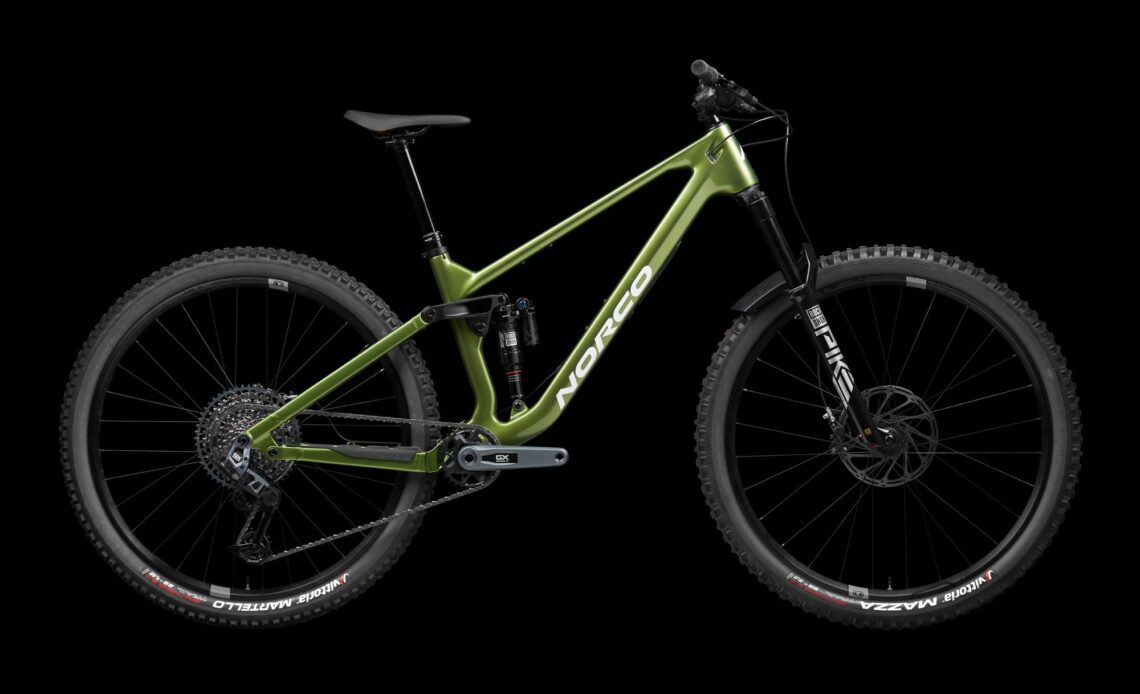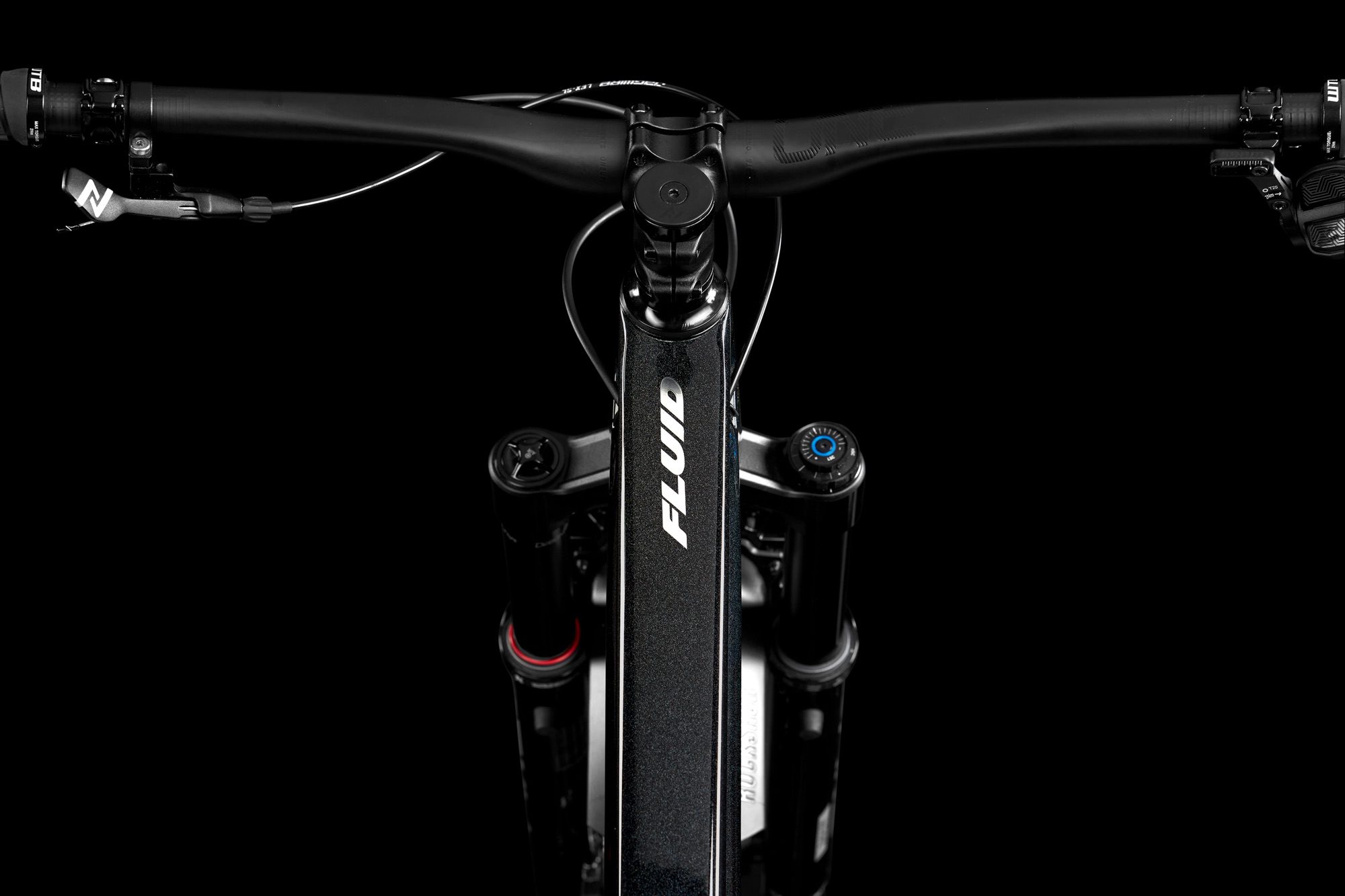After a very warm reception for the Fluid Alloy last year, Norco is bringing the short travel trail bike back with an upgrade to a carbon fiber frame.
Still not an Optic. Really
One of the main points distinguishing the alloy Fluid FS from the existing Optic was its price and alloy frame. Norco packed a whole lot of performance for the cost of the Fluid. There was also a slightly longer shock, aimed at a slightly more forgiving and well-rounded ride than the Optic. So, now that Fluid comes in a carbon fibre frame, what’s the difference between the Fluid Carbon and the Optic?
Not much, sure, and Norco hints at that with a wink in the Fluid Carbon’s on-point “Lighten Up” ad campaign. But there are differences. The frame is lighter, too. 600 grams lighter than the alloy Fluid, yes. But it is also 150 grams lighter than the Optic. The Fluid Carbon also get the full Ride Aligned geometry treatment, adding size-specific seat tube angles to size-specific rear centre (whereas the Optic only changes rear centre lengths between sizes).
That, and the new Fluid Carbon stills has a longer-stroke shock than the Optic does. Like on the alloy version, this is designed to give the Fluid a more well-rounded ride than the Optic. It’s easier to get the shock moving and doesn’t require as much rider input to get the most out of bikes as the Optic does. The Fluid also has a slightly longer reach for confidence at speed. Basically, it’s a bit easier to ride than the Optic, though Norco is quick to say its also very capable if you’re looking to push yourself on rowdier trails.
What’s new: Norco Fluid FS Carbon
The main difference between the alloy Fluid and Fluid Carbon is, of course, the carbon fibre front triangle. But the material isn’t the only change.
Let’s start with the frame though. Why not just make a Fluid alloy with a lighter parts kit? Well, Norco argues that the front triangle is the most cost-effective way to cut weight and has the most effect. It’s the best weight-per-dollar and makes changes in the right place. Norco engineers can make the frame very durable as they are making it lighter by using the more expensive material. In contrast, going to lighter wheels would either compromise durability or cost way more than the difference in price between the alloy Fluid and the new models. As mentioned above, Norco was able to make the frame 150 grams lighter than the carbon fiber Optic frame. Like many Norco frames, the rear triangle…
Click Here to Read the Full Original Article at Canadian Cycling Magazine…


